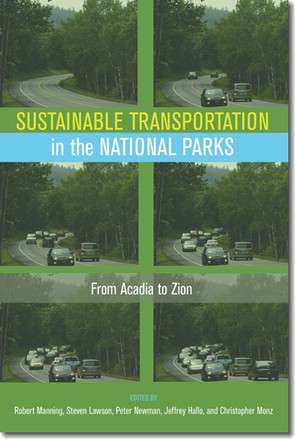Professor co-authors book on sustainable transportation at national parks

Peter Newman, professor and head of the Department of Recreation, Park, and Tourism Management in the College of Health and Human Development has co-authored the new book, "Sustainable Transportation in the National Parks: From Acadia to Zion."
Other co-authors include Robert Manning, who directs the Park Studies Laboratory at the University of Vermont; Steven Lawson; Jeffrey Hallo; and Christopher Monz.
The book, published by University Press of New England, focuses on transportation as it relates to national parks and appropriate visitor capacity while taking into account ecological sensitivity.
"Transportation has been an integral part of national parks from their start in 1916 and the concept of delivering people to a park through transportation systems is really what helped get the national parks off the ground 100 years ago; if you want to protect the parks we need to experience them and transportation systems have been the medium to get people there," Newman said.
At the same time, the authors acknowledge that increasing amounts of use can have detrimental effects on ecological resources and experiential conditions, like crowding within national parks.
"In the past, transportation has been planned by transportation planners whose goal it is to move as many people as possible through road corridors to certain places in the most efficient and safe way possible," Newman said. "However, for parks, delivering a large number of people to sensitive places can be problematic where that number has an effect on both crowding and ecological kinds of issues. Therefore, we've tried to think about how to deliver the right number of people to the right place at the right time. When you approach it that way you begin to manage transportation in conjunction with the values and management objectives that protect national parks."
In 2013, the national parks system saw nearly 300 million visitors, Manning said.
"In many ways that's a wonderful thing that so many people would be interested in national parks. But the problem is it presents some challenges as well," Manning said. "The parks need to be preserved as does the visitor experience, so we've been encouraging research and encouraging the national parks system to adopt a different form of transportation planning and management, one that focuses on the objectives of the park and then plans transportation around that."
The purpose of the book is to provide case studies where the authors have seen success, such as Rocky Mountain National Park, where officials are rethinking the effects of alternative transportation on trail networks; and Yosemite National Park, where officials have put much work into understanding the visitor experience as it relates to transportation planning as well as visitor flow, crowding and ecological impacts.
"It's written for practitioners as well as anyone with a passion for national parks who wants to understand the next generation of management and protection of parks," Newman said. "Transportation planning as it exists outside the park is different in a park setting and transportation can be a great tool for national park managers to achieve their management objectives and balance use with preservation of these special places."
Provided by Pennsylvania State University















